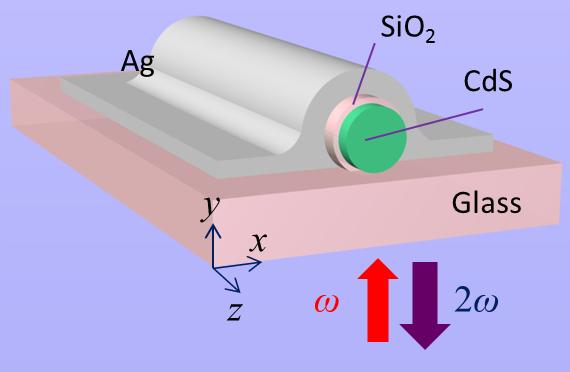Photon mixing stick could be centre of future computer
 Engineers have built a nanowire system that could be used to power photonic computer systems.
Engineers have built a nanowire system that could be used to power photonic computer systems.
Photonic systems could eventually replace electron-based computers, but the fundamentals of computation, mixing two inputs into a single output, currently require too much space and power when done with light.
Engineers at the University of Pennsylvania say their nanowire system that can combine two light waves to produce a third with a different frequency.
It also uses an optical cavity to amplify the intensity of the output to a usable level.
The research has been published in Nature Communications.
“Mixing two input signals to get a new output is the basis of computation,” said Ritesh Agarwal, professor of materials science and engineering in the School of Engineering and Applied Science.
“It's easy to do with electric signals, but it's not easy to do with light, as light waves don't normally interact with one another.”
The difficulty inherent in ‘mixing’ light may not seem obvious, given the range of colours on TV or computer screen that are produced solely by combinations of red, green and blue pixels.
The yellows, oranges and purples those displays make, however, are a trick of perception, not of physics. Red and blue light are simply experienced simultaneously, rather than combined into a single purple wavelength.
So-called ‘nonlinear’ materials are capable of this kind of mixing, but even the best candidates in this category are not yet viable for computational applications due to high power and large volume constraints.
To reduce the volume of the material and the power of the light needed to do useful signal mixing, the researchers needed a way to amplify the intensity of a light wave as it passed through a cadmium sulfide nanowire.
The researchers achieved this through a clever bit of optical engineering: partially wrapping the nanowire in a silver shell that acts like an echo chamber.
By using the chamber to change the polarisation of the light as it entered the nanowire, the researchers were able to better confine it to the frequency-altering, nonlinear part of the device: the nanowire core.
“By engineering the structure so that light is mostly contained within the cadmium sulfide rather than at the interface between it and the silver shell, we can maximize the intensity while generating the second harmonic,” post-doctoral researcher Ming-Liang Ren said.
 Like a second harmonic played on a guitar string, this meant doubling the frequency of the light wave.
Like a second harmonic played on a guitar string, this meant doubling the frequency of the light wave.
Information in a photonic computer system could be encoded in a wave's frequency, or the number of oscillations it makes in a second.
Being able to manipulate that quality in one wave with another allows for the fundamentals of computer logic.
“We want to show we can sum two frequencies of light,” Agarwal said.
“So we simplified the experiment. By taking one frequency and adding it to itself, you get double the frequency in the end. Ultimately, we want to be able to tune the light to whatever frequency is needed, which can be done by altering the size of the nanowire and the shell.”








 Print
Print